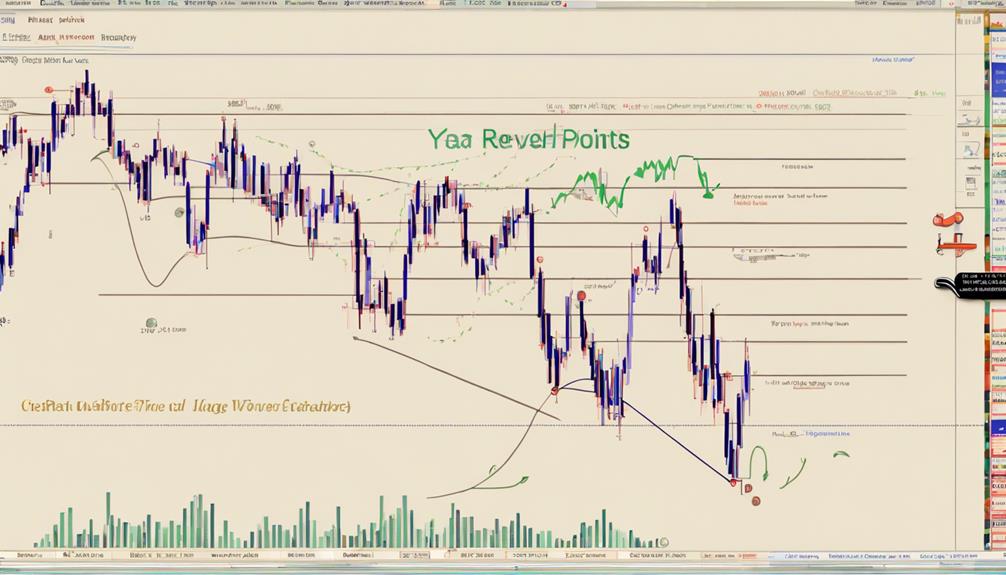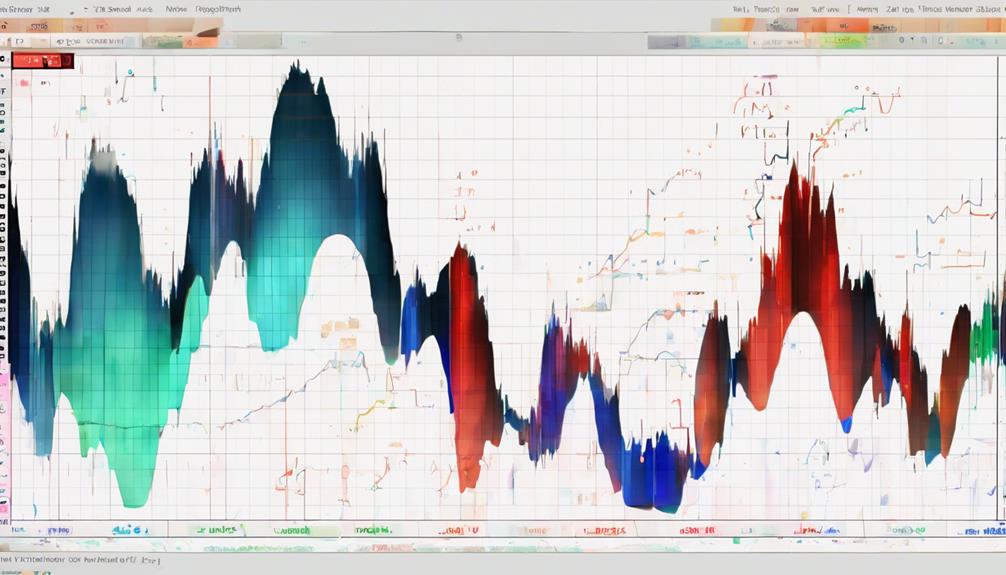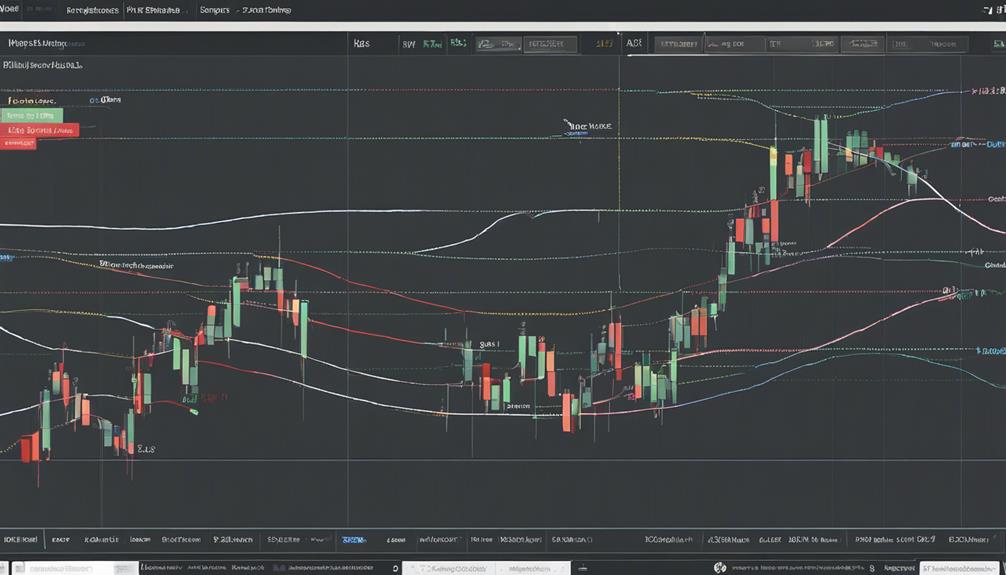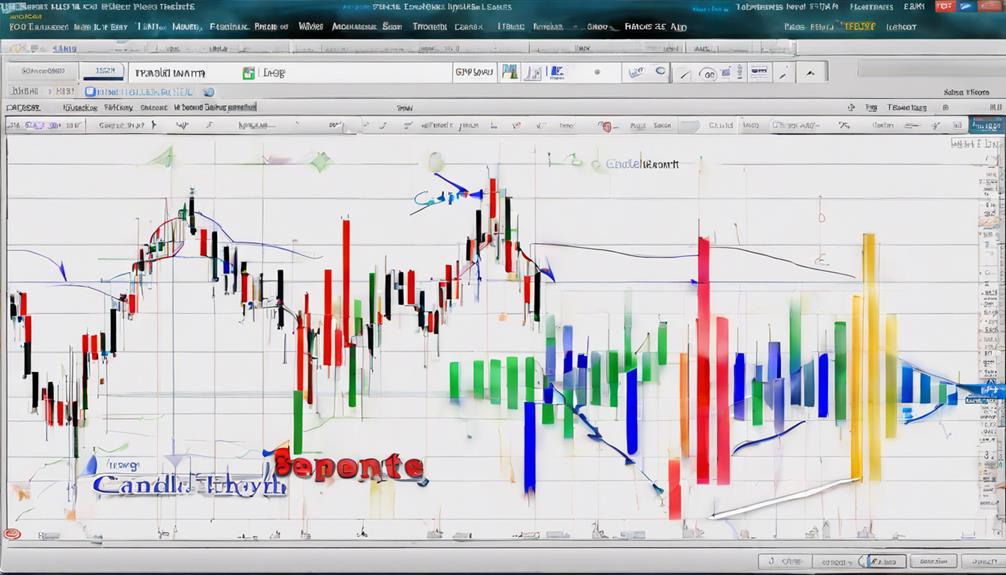Exploring the practical applications of Elliott Wave Theory unveils a methodical approach to deciphering market movements and projecting future price actions. As traders navigate the complexities of wave patterns and market cycles, the insights gained from this theory offer a unique perspective on market behavior. By honing in on specific wave structures, traders can potentially unlock hidden opportunities and refine their trading strategies.
However, the nuances of applying Elliott Wave Theory effectively require a keen eye for detail and a deep understanding of market trends. As we delve into the intricacies of this theory, we uncover a world where market psychology and technical analysis intersect, presenting a compelling case for further exploration.
Understanding Elliott Wave Theory Basics
In dissecting market movements for predictive purposes, Elliott Wave Theory deconstructs price actions into distinct impulse and corrective waves, forming a foundational understanding of market dynamics.
Impulse waves, which align with the trend, are labeled Waves 1, 3, and 5, while corrective waves, moving against the trend, are Waves 2 and 4. This five-wave pattern helps traders identify potential entry and exit points in the market.
Wave 3, often the longest and most powerful, is crucial for traders as it typically leads to substantial price movements in the direction of the trend. Utilizing Fibonacci ratios such as 0.382, 0.500, and 0.618 aids in pinpointing possible reversal or continuation levels within these waves.
Identifying Reversal Points

Continuing the analysis of market dynamics within Elliott Wave Theory, a crucial aspect involves the identification of key reversal points that signal potential shifts in price trends.
Reversal points, often located at the termination of corrective waves in Elliott Wave patterns, can be pinpointed using specific Fibonacci ratios like 0.382 and 0.618. Traders rely on wave counts and Fibonacci retracement levels to determine areas where price movements might reverse.
Understanding the distinction between impulse waves that move with the trend and corrective waves that move against it is essential for recognizing these pivotal reversal points. By applying Fibonacci ratios and closely monitoring wave counts, traders can make informed decisions about potential trend reversals.
This analytical approach to identifying reversal points not only enhances the accuracy of market analysis but also aids traders in making strategic trading decisions based on the principles of Elliott Wave Theory.
Analyzing Wave Patterns

Utilizing Elliott Wave Theory involves a meticulous analysis of wave patterns to discern the underlying structure of market movements. Wave patterns, categorized into impulse waves and corrective waves, play a crucial role in understanding market dynamics and trends.
Impulse waves, particularly Wave 3, are often the longest and strongest waves in trending phases, indicating significant price movements. Corrective waves, such as Wave 2 and Wave 4, offer opportunities for traders to capitalize on price corrections and make informed trading decisions.
Additionally, identifying wave extensions and retracements through Fibonacci ratios helps confirm wave patterns and predict potential price movements with greater accuracy. By analyzing wave characteristics and recognizing the alternation between impulse and corrective waves, traders can gain valuable insights into market behavior and enhance their trading strategies effectively.
Utilizing Elliott Waves in Trading

Through the strategic application of Elliott Wave Theory in trading, market participants can leverage wave patterns to forecast potential price reversals and optimize their trading decisions for profit. Traders who understand the nuances of Elliott Wave Theory can effectively identify patterns like Wave 1's uncertainty and Wave 3's strength, aiding in predicting trend reversals accurately.
By combining this theory with technical indicators such as RSI and Fibonacci retracement, traders can enhance their decision-making process when entering or exiting trades. Adhering to rules like identifying the main trend and correctly marking waves, supplemented by additional technical tools for confirmation, is crucial for successful implementation of Elliott Waves in trading strategies.
This approach equips traders to predict possible support and resistance levels, thereby refining their overall trading edge. By incorporating Elliott Wave Theory into their trading methodologies, traders can develop a more structured and informed approach to the market, enhancing their ability to capitalize on profitable opportunities.
Enhancing Trading Decisions

How does Elliott Wave Theory contribute to the enhancement of trading decisions?
Elliott Wave Theory plays a crucial role in improving trading decisions by providing a structured framework for analyzing market movements. By understanding the Elliott Wave principle and its application in technical analysis, traders can better interpret price patterns and make informed decisions.
Here are four ways in which Elliott Wave Theory enhances trading decisions:
- Identifying patterns: Recognizing impulse waves and corrective waves helps traders anticipate potential market movements.
- Technical indicators: Utilizing tools like Fibonacci retracement and Relative Strength Index (RSI) alongside Elliott Wave analysis can validate trading signals.
- Risk management: Integrating Elliott Wave Theory into risk management strategies enables traders to set appropriate stop-loss orders and manage portfolio diversification effectively.
- Market trading: Applying wave analysis techniques in practical scenarios empowers traders to develop comprehensive trading strategies based on trend strength and wave extensions.
Incorporating Elliott Wave Theory into trading decisions not only enhances technical analysis skills but also aids in making more accurate and well-informed trading choices.
Can you provide practical examples of Elliott Wave Theory applications based on detailed insights?
Certainly! Practical examples of detailed Elliott Wave Theory insights can include applying the theory to analyze stock market trends, predicting price movements in forex trading, and identifying potential entry and exit points for traders. By utilizing the detailed Elliott Wave Theory insights, investors can make informed decisions and manage risks more effectively.
Frequently Asked Questions
What Is the Practical Application of Elliott Wave Principle?
The practical application of Elliott Wave Principle in trading involves leveraging wave patterns to anticipate stock price movements, identifying trends, and strategically determining entry and exit points for effective risk management and informed decision-making.
What Does Elliott Wave Theory Tell You?
Elliott Wave Theory provides a structured framework for analyzing market trends by identifying wave patterns. It distinguishes between impulse and corrective waves, using Fibonacci ratios to predict potential reversal points. This theory aids traders in understanding market dynamics and predicting future price movements.
What Are the Advantages of Elliott Wave Theory?
Elliott Wave Theory offers traders a structured framework for analyzing market trends and identifying potential reversal points. By understanding wave patterns and Fibonacci ratios, traders can gain insights into market psychology, aiding in informed entry and exit decisions.
What Are the Objectives of Elliott Wave Theory?
Elliott Wave Theory's primary objective lies in deciphering market trends through wave patterns, aiding traders in forecasting price movements. Employing a structured framework, the theory facilitates informed decision-making by identifying potential reversals and continuations.
Conclusion
In conclusion, the application of Elliott Wave Theory in trading provides a structured approach to understanding market dynamics and predicting future price movements. By analyzing wave patterns and utilizing this theory alongside other technical indicators, traders can enhance their strategies and make informed trading decisions.
Like a compass guiding a ship through turbulent waters, Elliott Wave Theory offers valuable insights into market psychology and trend dynamics, contributing to a comprehensive understanding of market behavior.
